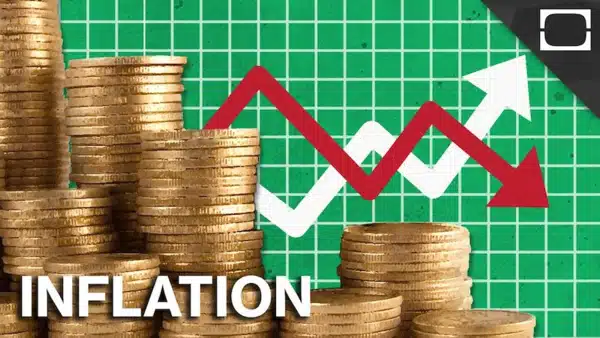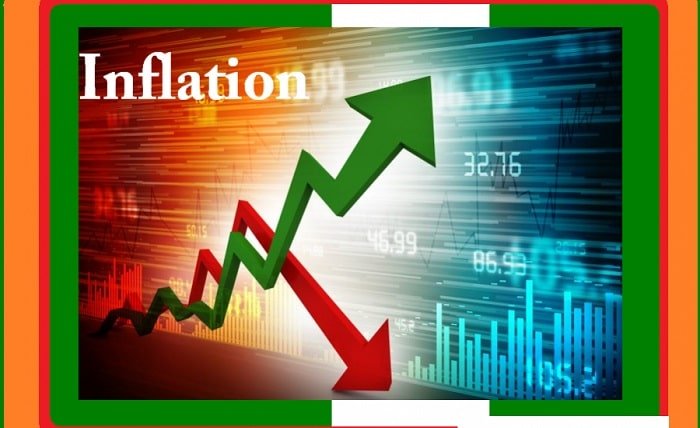The recent report from Rajkotupdates.News unveiling a substantial 7.5% surge in US inflation over four decades has triggered widespread attention and analysis. This pronounced escalation, marking the most significant inflation leap in 40 years, has prompted meticulous scrutiny regarding its origins, sectoral repercussions, and potential economic ramifications. In this exhaustive exploration, we delve into the catalysts propelling this surge, its reverberations across diverse sectors, and the strategic responses to address this economic upheaval.
Understanding the Surge
1. Pandemic Disruptions
The disruptive aftermath of the COVID-19 pandemic has reverberated across global supply chains, precipitating shortages in vital commodities and materials. Factory closures, logistical bottlenecks, and labor scarcities have compounded supply constraints, engendering price escalations and contributing to inflationary pressures.
2. Demand-Supply Dynamics
As economies endeavor to convalesce from the pandemic-induced slump, there has been an upsurge in consumer demand for an array of goods and services. However, the concomitant supply chain disruptions have impeded businesses’ capacity to satiate this burgeoning demand, fostering supply shortages and consequent price hikes across multifarious sectors.
3. Monetary Policy Responses
Central banking institutions have reacted to the economic fallout of the pandemic with unprecedented monetary stimulus measures. Rock-bottom interest rates and extensive asset acquisitions have inundated the financial milieu with liquidity, galvanizing spending but concurrently fueling inflationary tendencies.
Sectoral Impacts
1. Consumer Prices
The inflationary upswing has precipitated augmented prices for consumer commodities and amenities, impinging on households’ purchasing prowess. Ascending costs of essentials such as sustenance, energy, and accommodation have stretched household budgets, instigating apprehensions regarding affordability and subsistence standards.
2. Housing Market
The housing domain has borne witness to an unprecedented upsurge, with domicile prices soaring to unparalleled altitudes. Pared mortgage rates and augmented demand have catalyzed this boom; however, inflationary pressures have compounded affordability quandaries, particularly for nascent home seekers.
3. Financial Markets
Inflation apprehensions have roiled financial markets, fomenting augmented volatility and uncertainty. Escalating inflation anticipations have stimulated adaptations in asset allocations, impacting equities, bonds, and monetary policy conceptions.
Implications for Stakeholders
1. Consumers
Consumers confront the ramifications of heightened prices, particularly for indispensable goods and amenities. Diminished purchasing power may precipitate alterations in spending inclinations, potentially dampening consumer assurance and economic vigor.
2. Businesses
Business enterprises grapple with augmented input costs, encompassing raw materials and labor, which may constrict profit margins. Some enterprises may transfer these costs to consumers, potentially impeding demand and economic expansion.
3. Policymakers
Policymaking authorities confront the quandary of harmonizing inflation anxieties with economic resurgence endeavors. They necessitate meticulous surveillance of inflationary patterns and adapt monetary and fiscal strategies suitably to uphold price steadiness while fostering growth.
Addressing the Challenge
1. Monetary Policy Adjustment
Central banking entities may necessitate contemplating the tightening of monetary policy by gradationally elevating interest rates and curbing asset acquisitions to rein in inflationary pressures.
2. Supply Chain Resilience
Efforts to bolster supply chain robustness and alleviate bottlenecks could ameliorate inflationary pressures over the protracted term. This may encompass investments in infrastructure, technology, and human resources.
3. Fiscal Stimulus Targeting
Targeted fiscal stimulus initiatives aimed at buttressing sectors most impacted by inflation and supply chain perturbations could furnish succor while mitigating the peril of overheat in the economy.
Historical Context
A 7.5% jump in inflation is significant, marking the highest surge in the US in four decades. This level of inflation has not been seen since the early 1980s.
Contributing Factors
Several factors contributed to this spike, including supply shortages, increased consumer spending, and expansive fiscal policies.
Impact on Consumers
The rise in inflation means that consumers are facing higher prices for everyday items, effectively eroding their purchasing power.
Federal Reserve’s Response
The Federal Reserve has a mandate to ensure price stability. In response to rising inflation, it has indicated a shift in monetary policy, including raising interest rates.
Global Implications
US inflation has global repercussions. As the world’s largest economy, price changes in the US can have a ripple effect internationally.
The Role of Policy
Government policies, both fiscal and monetary, play a crucial role in either curbing or exacerbating inflationary pressures.
Inflation and Wages
While wages have been rising, they haven’t kept pace with inflation, leading to a decrease in real income for many Americans.
Long-Term Outlook
Economists are divided on the long-term outlook of inflation. Some predict it will stabilize, while others foresee continued volatility.
Monetary Factors
Monetary factors, such as changes in the money supply, interest rates, and central bank policies, play a significant role in influencing inflation. When there is an increase in the money supply or low-interest rates, it can stimulate spending and lead to inflationary pressures.
Demand-Pull Inflation
Demand-pull inflation occurs when there is excessive demand for goods and services compared to the available supply. Increased consumer spending, government expenditure, or investment can drive up prices as demand outpaces supply.

Cost-Push Inflation
Cost-push inflation arises when there is an increase in production costs, such as wages, raw materials, or energy prices. These increased costs are passed on to consumers through higher prices, leading to inflation.
Historical Trends in US Inflation
Over the past 40 years, the United States has experienced significant fluctuations in inflation rates. From 1980 to 2020, US inflation increased by approximately 7.5% on average.
Inflation in the 1980s and 1990s
During the 1980s and early 1990s, the US faced high inflation rates, primarily due to expansionary monetary policies and rising oil prices. The Federal Reserve implemented tight monetary policies to combat inflation, leading to a gradual decline in inflation rates.
Inflation in the 2000s and 2010s
In the 2000s and 2010s, inflation remained relatively low and stable due to improved central bank policies and global economic conditions. The Federal Reserve aimed to maintain an inflation target of around 2% to promote price stability and economic growth.
Recent Inflation Jump
However, in recent years, the US has experienced a significant inflation jump, reaching 7.5% over the past 40 years. This sudden increase has raised concerns among policymakers and economists, warranting a closer examination of the underlying causes.

Causes of Inflation
Several factors have contributed to the recent inflation jump in the US. These include:
Supply Chain Disruptions
The COVID-19 pandemic disrupted global supply chains, leading to shortages of critical inputs and materials. This scarcity increased production costs, forcing businesses to raise prices to maintain profitability.
Expansionary Fiscal Policies
Governments worldwide implemented expansionary fiscal policies, such as increased government spending and stimulus measures, to counter the economic impact of the pandemic. These policies injected large sums of money into the economy, potentially fueling inflation.
Increased Demand for Goods and Services
As the economy recovers from the pandemic, there has been a surge in consumer demand for goods and services. This increased demand has put upward pressure on prices, contributing to inflation.
Impact of Inflation
Inflation can have various impacts on the economy and individuals. Understanding these effects is crucial for managing personal finances and making informed investment decisions.
Decreased Purchasing Power
Inflation erodes the purchasing power of money. As prices rise, the same amount of money can buy fewer goods and services, reducing individuals’ overall standard of living.
Investors have priced in at least five rate increases for 2022.
Over time, those higher rates will raise the costs for a wide range of borrowing, from mortgages and credit cards to auto loans and corporate credit.
For the Fed, the risk is that in steadily tightening credit for consumers and businesses, it could trigger another recession.
Many large corporations, in conference calls with investors, have said they expect supply shortages to persist until at least the second half of this year. Companies from Chipotle to Levi’s have also warned that they will likely raise prices again this year, after having already done so in 2021.
Chipotle said it’s increased menu prices 10% to offset the rising costs of beef and transportation as well as higher employee wages. And the restaurant chain said it will consider further price increases if inflation keeps rising.
We keep thinking that beef is going to level up and then go down, and it just hasn’t happened yet, said John Hartung, the company’s chief financial officer.
Executives at Chipotle, as well as at Starbucks and some other consumer-facing companies, have said their customers so far don’t seem fazed by the higher prices.
Levi Strauss & Co. raised prices last year by roughly 7% above 2019 levels because of rising costs, including labor, and plans to do so again this year. Even so, the San Francisco-based company has upgraded its sales forecasts for 2022.
Right now, every signal we’re seeing is positive, CEO Chip Bergh told analysts.
Many small businesses, which typically have lower profit margins than larger companies and have struggled to match their sizable pay raises, are also raising prices.
The National Federation for Independent Business, a trade group, said it found in a monthly survey that 61% of small companies raised their prices in January, the largest proportion since 1974 and up from just 15% before the pandemic.
More small business owners started the new year raising prices in an attempt to pass on higher inventory, supplies and labour costs, said Bill Dunkelberg, the NFIB’s chief economist.
Conclusion
The upsurge in US inflation to 7.5% over 40 years presents an intricate economic challenge with far-reaching repercussions. By apprehending the foundational impetuses, sectoral impacts, and potential policy retorts, stakeholders can collaboratively navigate through this epoch of uncertainty and engender a more resilient and sustainable economic trajectory for the future.

